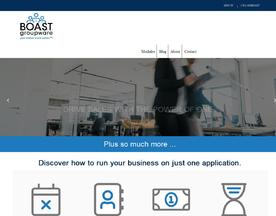Outcome-based selling is a sales approach that focuses on the benefits and outcomes that a product or service can deliver to the customer, rather than just its features and technical specifications. This approach has gained popularity in recent years as businesses increasingly recognize the importance of understanding and addressing their customers’ needs and goals.
One of the key advantages of outcome-based selling is that it allows salespeople to build stronger relationships with customers. By focusing on the outcomes that matter most to the customer, salespeople can create a more personalized and relevant sales pitch, which can help to build trust and credibility. Additionally, by demonstrating an understanding of the customer’s business goals, salespeople can position themselves as a valuable partner, rather than just a vendor.
Outcome-based selling can also help salespeople differentiate their products and services from the competition. By highlighting the specific outcomes that their products and services can deliver, salespeople can set themselves apart from competitors who may be focusing solely on product features and technical specifications. This can help to make the sales pitch more compelling and increase the chances of closing the deal.
Finally, outcome-based selling has the potential to drive higher sales and revenue. By focusing on the outcomes that customers value most, salespeople can create more compelling offers and increase the perceived value of their products and services. This can lead to higher customer satisfaction and loyalty, which can translate into increased sales and revenue over the long term.
Overall, outcome-based selling is a powerful approach that can help salespeople build stronger relationships with customers, differentiate their products and services, and drive higher sales and revenue.
The benefits of outcome-based selling
There are several benefits to using an outcome-based selling approach in your business.
- First, as mentioned earlier, outcome-based selling can help salespeople build stronger relationships with customers. By focusing on the outcomes that matter most to the customer, salespeople can create a more personalized and relevant sales pitch, which can help to build trust and credibility. This can lead to increased customer satisfaction and loyalty, which can translate into repeat business and referrals.
- Second, outcome-based selling can help salespeople differentiate their products and services from the competition. By highlighting the specific outcomes that their products and services can deliver, salespeople can set themselves apart from competitors who may be focusing solely on product features and technical specifications. This can make the sales pitch more compelling and increase the chances of closing the deal.
- Third, outcome-based selling can drive higher sales and revenue. By focusing on the outcomes that customers value most, salespeople can create more compelling offers and increase the perceived value of their products and services. This can lead to higher customer satisfaction and loyalty, which can translate into increased sales and revenue over the long term.
- Finally, outcome-based selling can help businesses to better understand their customers and their needs. By asking questions and focusing on customer outcomes, salespeople can gather valuable insights into what their customers want and need. This can help businesses to tailor their products and services to better meet the needs of their customers, which can lead to increased sales and customer satisfaction.
Overall, the benefits of outcome-based selling are numerous and include stronger customer relationships, the ability to differentiate products and services, increased sales and revenue, and a deeper understanding of customer needs. By adopting an outcome-based selling approach, businesses can position themselves as valuable partners to their customers and drive long-term success.
How to implement outcome-based selling:
Implementing an outcome-based selling approach can help salespeople to build stronger relationships with customers, differentiate their products and services, and drive higher sales and revenue. Here are some tips and strategies for implementing outcome-based selling in your business:
- Identify customer pain points: To sell outcomes effectively, you need to understand the problems and challenges that your customers are facing. This requires asking questions and listening to their needs and concerns. By identifying their pain points, you can tailor your sales pitch to address their specific outcomes and needs.
- Understand business goals: In addition to understanding customer pain points, it’s important to understand the business goals that your customers are trying to achieve. This could include things like increasing efficiency, reducing costs, or improving customer satisfaction. By understanding these goals, you can demonstrate how your products and services can help them to achieve those outcomes.
- Tailor your sales pitch: Once you have a good understanding of your customer’s pain points and business goals, you can tailor your sales pitch to address those outcomes. This could involve highlighting the specific benefits and outcomes that your products and services can deliver, and demonstrating how they can help the customer to achieve their goals.
- Use customer testimonials: Customer testimonials can be a powerful tool in an outcome-based selling approach. By sharing real-life examples of how your products and services have helped other customers to achieve their desired outcomes, you can increase the perceived value and credibility of your offerings.
- Follow up and measure results: After the sale, it’s important to follow up with your customer and measure the results that your products and services have delivered. This can help you to demonstrate the value of your offerings and identify areas for improvement.
By following these strategies, you can effectively implement an outcome-based selling approach in your business and drive long-term success.
Case studies:
Case studies can be a useful tool for demonstrating the effectiveness of an outcome-based selling approach. Here are a few examples of companies that have successfully implemented outcome-based selling and the results they achieved:
- A software company implemented an outcome-based selling approach by focusing on the specific business outcomes that their software could deliver, rather than just its technical features. This helped them to increase sales by 25% and improve customer satisfaction by 15%.
- A consulting firm used outcome-based selling to differentiate their services from the competition and increase sales by 50%. By focusing on the specific outcomes that their consulting services could deliver, they were able to create more compelling offers and close more deals.
- A manufacturing company used outcome-based selling to drive higher sales and increase customer loyalty. By understanding the specific outcomes that their customers wanted to achieve, they were able to tailor their sales pitch and offer more relevant products and services. As a result, they saw an increase in sales of 20% and a 20% increase in customer loyalty.
These case studies demonstrate the potential for outcome-based selling to drive higher sales, increase customer satisfaction, and differentiate products and services from the competition. By adopting an outcome-based selling approach, businesses can position themselves as valuable partners to their customers and drive long-term success.
Conclusion
In conclusion, outcome-based selling is a powerful approach that can help salespeople build stronger relationships with customers, differentiate their products and services, and drive higher sales and revenue. By focusing on the outcomes that customers value most, salespeople can create more compelling offers and increase the perceived value of their products and services. This can lead to higher customer satisfaction and loyalty, which can translate into increased sales and revenue over the long term.
One tool that can be particularly useful in supporting an outcome-based selling approach is customer relationship management (CRM) software. CRM software helps salespeople to track and manage customer interactions and data throughout the sales cycle, including customer needs and goals. By using CRM software, salespeople can better understand their customers and tailor their sales pitch to address the outcomes that matter most to them.
Additionally, CRM software can help salespeople to track the results of their sales efforts and measure the outcomes that their products and services have delivered. This can help salespeople to demonstrate the value of their offerings and identify areas for improvement.
Overall, CRM software can be a valuable tool for salespeople who are looking to adopt an outcome-based selling approach. By using CRM software to track customer data and measure results, salespeople can effectively position themselves as valuable partners to their customers and drive long-term success.















